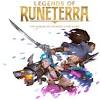New Zealand vs Bangladesh: The squad the Black Caps should ...

ANALYSIS: Three bolters in one Black Caps squad is near unheard of in the Gary Stead era. Then again, there’s an argument that the selections for this ODI series have not gone far enough.
Seamer Will O’Rourke, spinner Adi Ashok and allrounder Josh Clarkson are the uncapped ODI players to face Bangladesh, starting in Dunedin on Sunday (11am) – which is great news, but also a missed opportunity.
Amid the success of Stead’s tenure as head coach which hit dual peaks in England in 2019 and 2021, questions continue over a notably conservative selection policy where it appears harder to get dropped than chosen.
Rachin Ravindra at 24 was the success story of the Cricket World Cup – a seemingly bold choice that paid off – but unlikely would have featured if Kane Williamson and Michael Bracewell were fully fit.
Glenn Phillips, 26, Kyle Jamieson, 28, and Mark Chapman, 29, were the only others in that Black Caps squad in India aged under 30. In last Saturday’s test win at Dhaka, Phillips and Jamieson were the only sub-30s and the former was their matchwinner in just his third test, nearly four years after a torrid debut against Australia at Sydney when half the team were ill.
Albert Perez/Getty Images
Will O'Rourke of New Zealand A celebrates bowling Josh Philippe of Australia A in September.
As my colleague Mark Reason wrote of the non-selection of Ravindra in the test XI in Bangladesh: “…it is indicative of a test game fast hurtling from the stars to the gutter, as the next coach will inherit a bunch of oldtimers and retirees, with zero youth policy to help him out.”
On to Bangladesh, who play the first ODI in Dunedin on Sunday to help launch a largely underwhelming home summer where Australia’s visit in February stands out like a beacon. They are 0-16 in ODIs against the Black Caps in this country.
O’Rourke, 22, Ashok, 21, and Clarkson, 26, were the uncapped names, helped by the resting of Kane Williamson, Tim Southee, Daryl Mitchell, Mitchell Santner, Devon Conway and Phillips.
They could have gone further for these ODIs, and given the likes of Tom Latham, Henry Nicholls and Adam Milne the swerve. Or even just implement a hardline youth policy for the three-match series to test the depth in talent with a view to the next World Cup. It would be a novel extension of the successful NZA concept, with actual crowds and something riding on it.
Robert Cianflone/Getty Images
Rachin Ravindra goes big against Australia at the Cricket World Cup.
Ravindra, Finn Allen, Ashok and O’Rourke are those aged under-25 in the current lineup. With an eye to the future, we look at what a Black Caps under-25 team would look like – most very early in their careers but at a stage where others from past eras were pitched in against far tougher opponents in more hostile climes.
It’s unlucky for Dean Foxcroft, Dale Phillips and Ben Sears (who would be first choice selections but are all 25) and Clarkson, but is still a very handy lineup with enough box office appeal to make the concept worthwhile.
Stuff’s Black Caps under-25 XI:1.Finn Allen (24, Auckland)
Showed his immense power at T20 level but took more time in ODIs and missed World Cup selection. Made a whirlwind start to the Ford Trophy season with two centuries in his first four innings.
2.Katene Clarke (24, Northern Districts)
Another blaster at the top who was highly effective alongside Tim Seifert for last season’s T20 Super Smash champions. Still needs some polish in 50-over cricket (averaging 29 at a strike rate of 93).
Andrew Cornaga/Photosport
Katene Clarke on the charge for Northern Brave in the Super Smash.
3.Nick Greenwood (24, Wellington)
Eligibility would need to be clarified, as Greenwood is a current T20 international for Jersey. But players can switch with no stand-down from associate to full member nation. An excellent record in list-A cricket (averaging 43 at a strike rate of 90) and turned heads with his season-opening Plunket Shield 79 against Canterbury.
4.Rachin Ravindra (24, Wellington)
The captain of this mythical XI who could be a lot richer on Tuesday night when IPL teams bid for his services at auction. Ideally he opens but with a few top-order options he slots in at No 4, fresh from a dream World Cup where he was fourth-highest runscorer with 578 at 64.
5.Muhammad Abbas (20, Wellington)
Every team needs a bolter and Abbas is it. A future star who was dominant in age-grade cricket and made an impressive start to his first-class career (averaging 40 from 10 matches including a maiden century in his second appearance and 95 in his third).
KAI SCHWOERER/Stuff
Muhammad Abbas of Wellington is a rising star of the New Zealand cricket ranks.
6.William Clark (22, Central Districts)
Clark has been a model of consistency in Ford Trophy without kicking on to a big one. From seven list-A matches the Hawke’s Bay product averages 64 at a strike rate of 99, and also bowls some handy medium pace to add to the side’s all-round strength.
7.Mitch Hay (23, Canterbury)
One of the first names mentioned when this team was mooted. A class act with bat and wicketkeeping gloves, Hay averages 42 from 15 first-class matches and against the white ball kicked off the Ford Trophy with knocks of 75 against Wellington and 82 against Central.
8.Adi Ashok (21, Auckland)
Long tipped as our next high quality spin option - in a cricketing land that doesn’t always nurture nor encourage the twirlers - Ashok is already a Black Caps international after taking 1-28 in a T20 against UAE in August. The legspinner can apply pressure to Ish Sodhi.
Bruce Lim/Photosport
Auckland Aces legspinner Adi Ashok is leading the way for the next crop of spin bowlers.
9.Kristian Clarke (22, Northern Districts)
The equal top wicket-taker after five rounds of Ford Trophy, Clarke’s list-A career numbers are impressive: 25 wickets at 19. He also showed a wicket-taking knack in first-class cricket, with 42 from his first 14 matches including three five-wicket bags.
10.Matt Fisher (24, Northern Districts)
Fisher was trumpeted as one of those rare New Zealand species: a wicket-taking young quick who can fire it down at 140kmh-plus when he was first contracted in 2021. Injuries also hampered his rise, but he started this season with a six-wicket Plunket Shield bag against Auckland.
11.Will O’Rourke (22, Canterbury)
Cricket fans will lean in closer to their screens when O’Rourke marks out his run-up. Looks to have all the attributes for a quality quick bowler, with his height and bounce drawing comparisons with Kyle Jamieson. Celebrated his Black Caps selection with 3-34 against Wellington and his list-A average hovers at 22.


 New Zealand
New Zealand Argentina
Argentina  Australia
Australia  Austria
Austria  Brazil
Brazil  Canada
Canada  Chile
Chile  Czechia
Czechia  France
France  Germany
Germany  Greece
Greece  Italy
Italy  Mexico
Mexico  Nigeria
Nigeria  Norway
Norway  Poland
Poland  Portugal
Portugal  Sweden
Sweden  Switzerland
Switzerland  United Kingdom
United Kingdom  United States
United States 






















